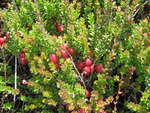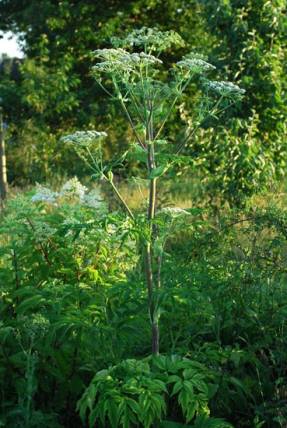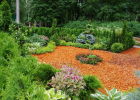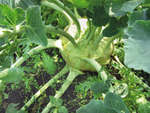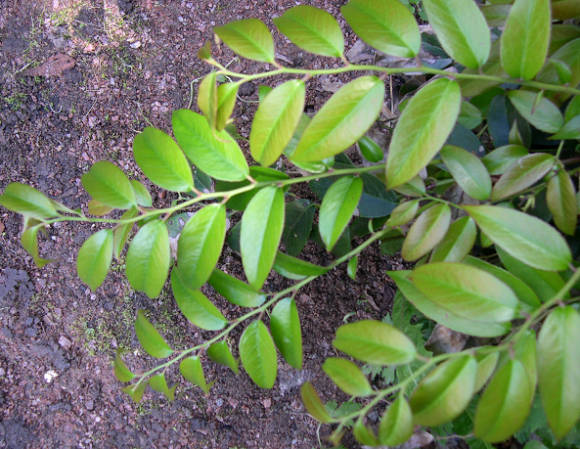About Aglaonem diversity - on the page Aglaonema.
Unpretentious aglaonema can be recommended to novice growers, these are one of the most resistant and durable plants used in landscaping. Aglaonems put up with insufficient illumination for many other plants, while maintaining color saturation, tolerate irregular watering, are undemanding to air humidity, but are very sensitive to cooling and waterlogging.

Lighting. Aglaonema can be grown almost anywhere in the home, with the exception of rooms with no light at all. But with insufficient lighting, the already not very rapid growth will stop altogether, and the leaf pattern may fade. Therefore, it is preferable to place plant pots in areas with bright, diffused light. Aglaonema does not need natural light, she feels great under fluorescent light.
Temperature. Aglaonems are thermophilic plants. And if they are tolerant of other conditions, then they do not tolerate a drop in temperature. It is optimal to keep them at + 22 ... + 25 ° C all year round, it is undesirable to drop below + 18 ° C, and + 15 ° C is already considered a striking temperature. In winter, the temperature difference on the windowsill and in other parts of the room can be up to 10-15 degrees. I recommend putting a thermometer next to the pot to monitor the temperature. Cooling the roots quickly leads to root disease. It is for this reason that aglaonemas often die in winter. Protect plants from cold drafts.

Watering. Aglaonems are quite plastic, grow well both in constantly slightly moistened soil, subject to its high porosity, and with rare watering, when the soil has time to dry almost completely, but do not tolerate stagnant water, especially in heavy substrates. At home, it is better to water the plant a few days later than waterlogging the soil, especially in cool conditions. With increased substrate moisture, the roots of aglaonem rot. Water the top of the pot with soft warm water (no cooler than the temperature in the room), standing for at least a day.
Air humidity. Aglaonema is tolerant of low air humidity, but can be affected by a tick under such conditions. It is advisable to increase the humidity of the air by regular spraying from a fine spray next to the plant.
Soil and transplants. Aglaonem roots are milky white and thick, thrive in small volumes of porous substrates. For them, a ready-made universal soil based on high-moor peat with the addition of perlite, coconut fiber or soil for terrestrial orchids is suitable. Since the growth rate of aglaonema is small, they are transplanted by careful transfer into a slightly larger pot only once every few years, as the roots fill the previous volume.
Read more in the article Transplanting indoor plants.
Top dressing. Aglaonema need small doses of fertilizers. Feed with universal complex fertilizers with microelements, reducing the dosage by 4-5 times. Excessive fertilization easily causes plant oppression.
 |  |
Reproduction varieties are carried out in a vegetative way - by rooting cuttings. To do this, cut off the tops or side shoots with leaves. Aglaonema gives roots well in water, it is only important to take care of its purity. Put an activated charcoal tablet on the bottom, the water will stay fresh longer. To stimulate root growth, you can add Kornevin to the water - enough amount that sticks to the damp tip of a toothpick. If the leaves lose their turgor, then place the jar with the plant in the greenhouse. You can root the cuttings in wet sphagnum or a mixture of perlite and peat substrate (2: 1), but always in a greenhouse. Bare stem fragments give roots worse, often dry out or rot, it is better to put them sideways on wet perlite and place them in a greenhouse.Intermediate cuttings root much better if they have at least one leaf.
Bloom. From time to time, more often with age, aglaonema in indoor conditions is able to release a peduncle in the form of an ear, wrapped in a greenish-white blanket. Flowering is not decorative, but it takes a lot of energy from the plant, which ages faster, the leaves begin to shrink, so it is recommended to remove all formed peduncles immediately after they are found.
Pruning. As it grows, the lower part of the stem gradually becomes bare, but this does not happen quickly. If the plant is old and has lost its decorative effect, then it can be renewed. Cut off the top of the head with leaves by grabbing a small piece of the bare stem and place it in water for rooting. After the roots grow back, plant in a small pot. If a stump remains completely without leaves in the pot, then it dries up more often than gives lateral shoots. To preserve the mother plant, it is recommended to leave at least 1-2 leaves on the stem after pruning.
Pests. Mealybug, scale insect, thrips, mite. If pests are found, treat with appropriate preparations.
Read more in the article Houseplant pests and control measures.
 |  |
Problems with growing aglaonema
The main problems with aglaonema occur with hypothermia or waterlogging of the soil, when the roots begin to rot. In such cases, it is necessary to re-root the plant as soon as possible, cutting off the upper part of the stem with leaves, and completely removing the lower part with diseased roots.
- Loss of turgor by leaves, wilting in wet soil warmth is a sign of root disease (see above). The same symptoms will be observed when the root clod is cooled, then the plant should be rearranged to a warm place and sprayed with warm water.
- The appearance of brown spots on the leaves also signals root disease (see above).
- Loss of the brightness of the pattern by all leaves or the formation of burns on the leaves - the cause may be excessive light, direct sunlight. Move the plant to a less lit area. Another reason may be tick infestation. Give the plant a warm shower, if the damage is severe, treat it with acaricides.
- Yellowing of the lower leaves may be normal due to natural aging. In this case, the process is slow. If several leaves turn yellow at the same time or the leaves turn yellow one after another, then the reason may be a lack of light, cool conditions, watering with cold water, a lack of nutrients. Correct containment conditions.
- The appearance of water droplets at the tips of the leaves it is normal for aglaonema, so the plant gets rid of excess water. It is observed shortly after watering, especially when the air humidity is high (during or on the eve of rain). Pay attention to the frequency and abundance of watering to avoid waterlogging.

